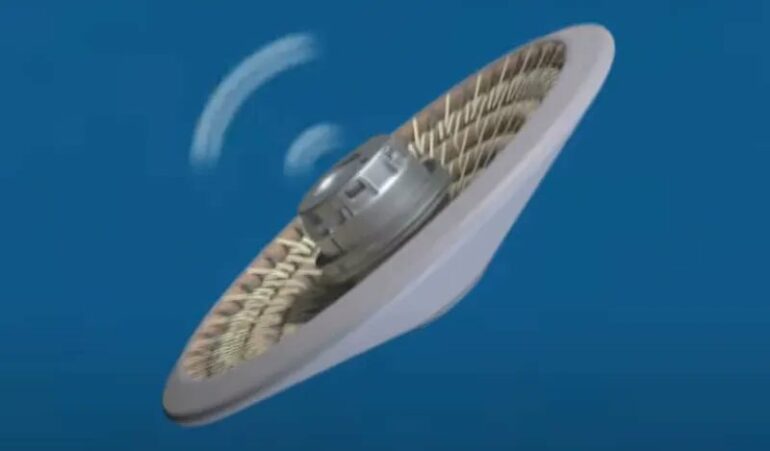Frictions exerted during atmospheric reentry are sufficient to turn spaceships into comets of flaming slag if not adequately mitigated – a nice outcome when deliberate, but virtually always extremely disastrous otherwise. When it was still in operation, the Space Shuttle was meant to strike the outermost margins of the Earth’s atmosphere at roughly Mach 25 (17,000 MPH), then ride a wave of superheated plasma down into the atmosphere until aerodynamic surfaces regained their efficacy.
NASA says that “using air drag is the most mass-efficient means of slowing down a spacecraft.” The Shuttle depended on layers of ablative heat shielding tiles that would melt and peel off, transporting more heat away with them, to withstand those severe 3000-degree F temperatures, but NASA has something better in mind for tomorrow’s reusable spaceship, something inflatable.
NASA has set a launch window for the LOFTID mission commencing November 9th. It will launch from Vandenberg Air Force Base on a ULA Atlas rocket with a new NOAA “polar weather satellite.” The LOFTID will unroll and inflate in low earth orbit when it departs from the top stage of the Atlas rocket.
All of that energy is protected by four layers of the LOFTID heatshield. The outermost layer is constructed of ceramic and silicon carbide yarn woven into fabric on industrial weavers similar to those used to produce denim. The second and third layers are two types of insulation that protect the fourth layer, which is the real inflated portions. Everything is packed into a series of concentric rings, which are made of a woven polymer 10 times stronger by weight than steel and will assist direct the shield’s expansion.
For more than a decade, NASA has been working on Hypersonic Inflatable Aerodynamic Decelerator (HIAD) technology. LOFTID (Low-Earth Orbit Flight Test of an Inflatable Decelerator) is the most recent incarnation of that technology, a new kind of heat shield that might solve many of NASA’s problems with the current generation of rigid aeroshells. The diameter of the rocket’s shroud imposes a hard restriction on the size of these hard shields. Soft aeroshells are not limited by this constraint and may be stretched well beyond the shroud’s edge, allowing NASA to safeguard bigger and heavier payloads as they reach the atmosphere.
This is extremely crucial for our future solar system exploration goals since present heat shields only operate in the Earth’s atmosphere. If you attempt to land anything the size of the Space Shuttle on the surface of Mars, you’ll wind up with a very long streak spread over the Red Planet — or one very short crater if you’re very unfortunate. The atmosphere of Mars is just too thin to create enough friction against modern-sized heat shields to safely delay the Shuttle’s entry. So NASA is experimenting with an inflatable one.
LOFTID will be travelling at more than 25 times the speed of sound when it starts its fall. NASA believes that towards the conclusion of the mission, LOFTID will be moving at a comparatively slow 609 MPH. The test shield’s onboard data recorder will broadcast the most relevant sensor and video data while keeping as much as possible onboard in an ejectable recorder during its flight. If all goes as planned, the LOFTID shield will decelerate enough to release a landing chute before landing in the Pacific Ocean for recovery by the ULA.

